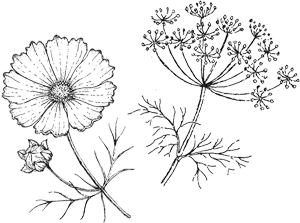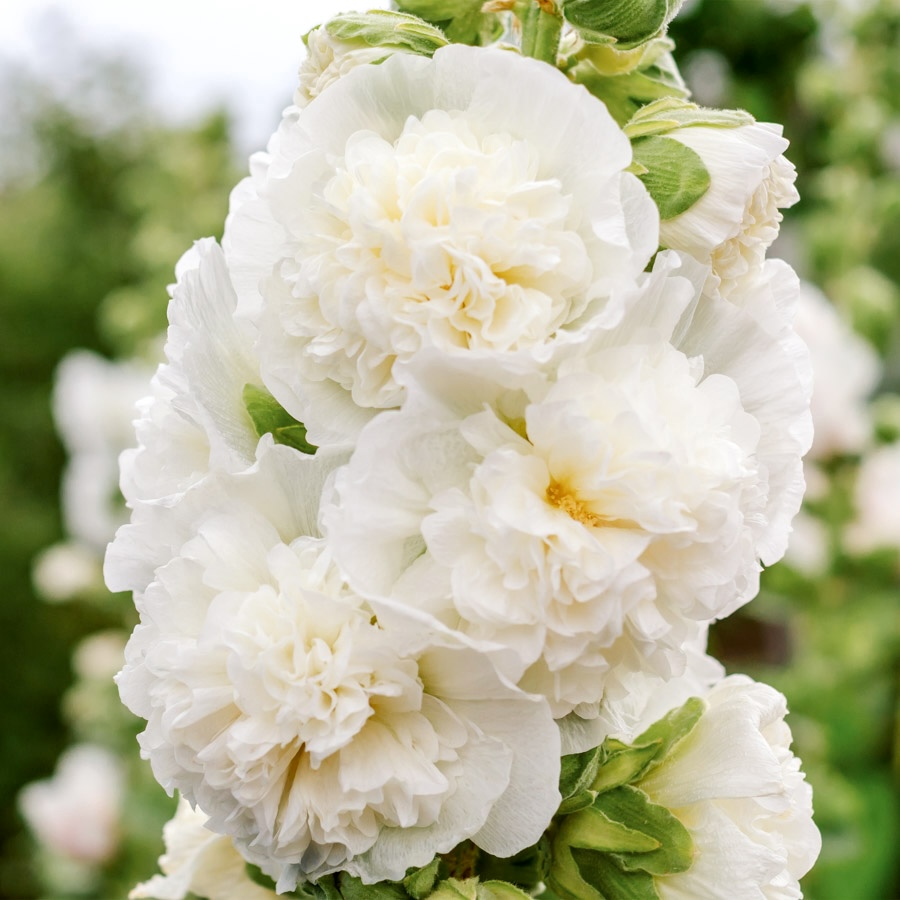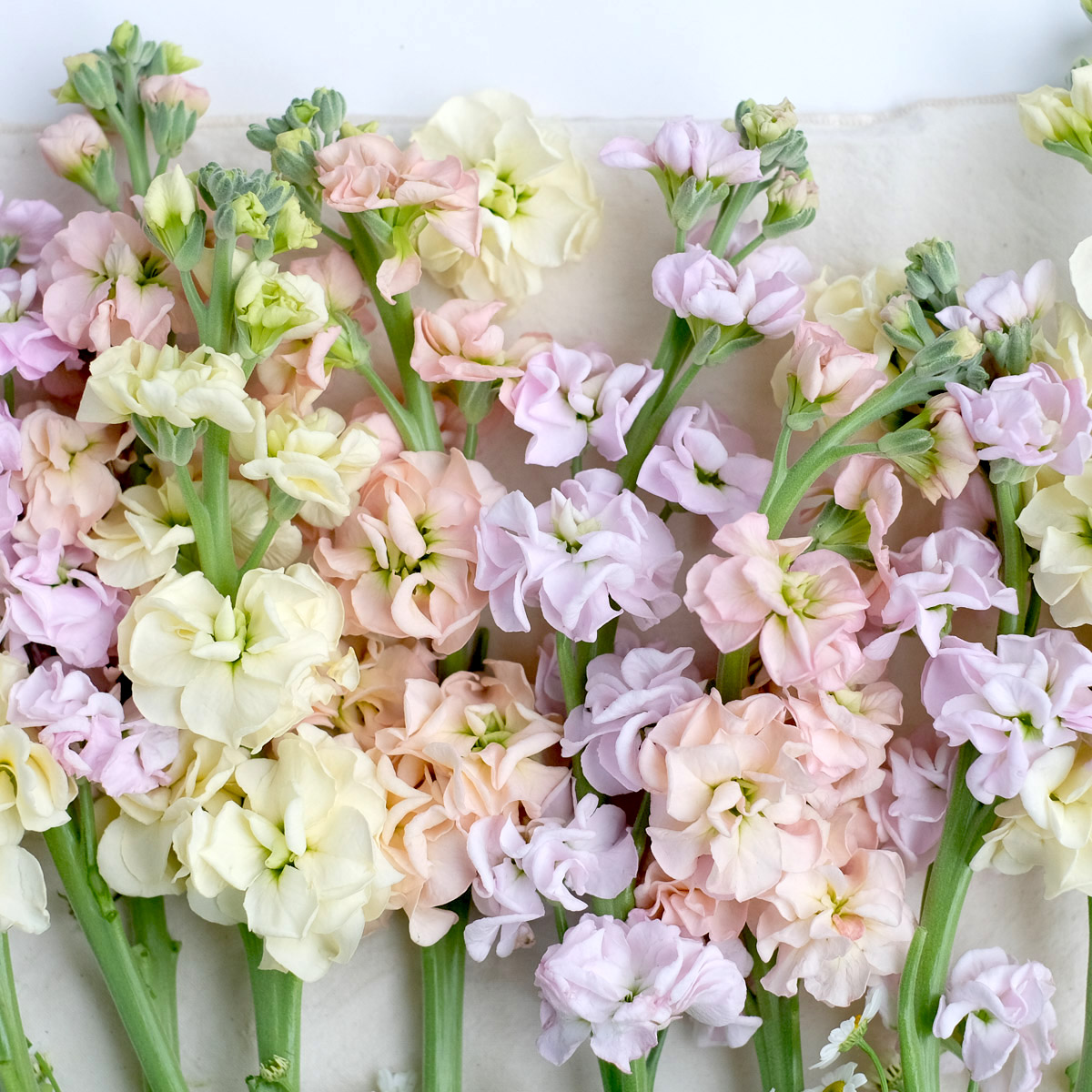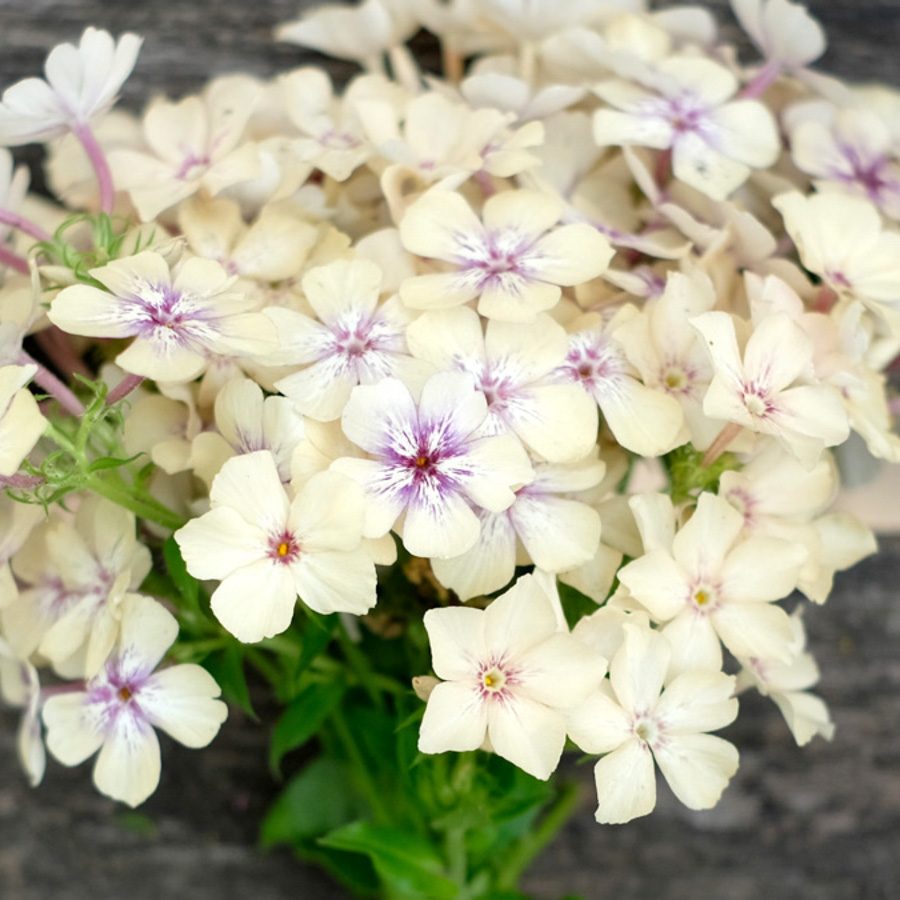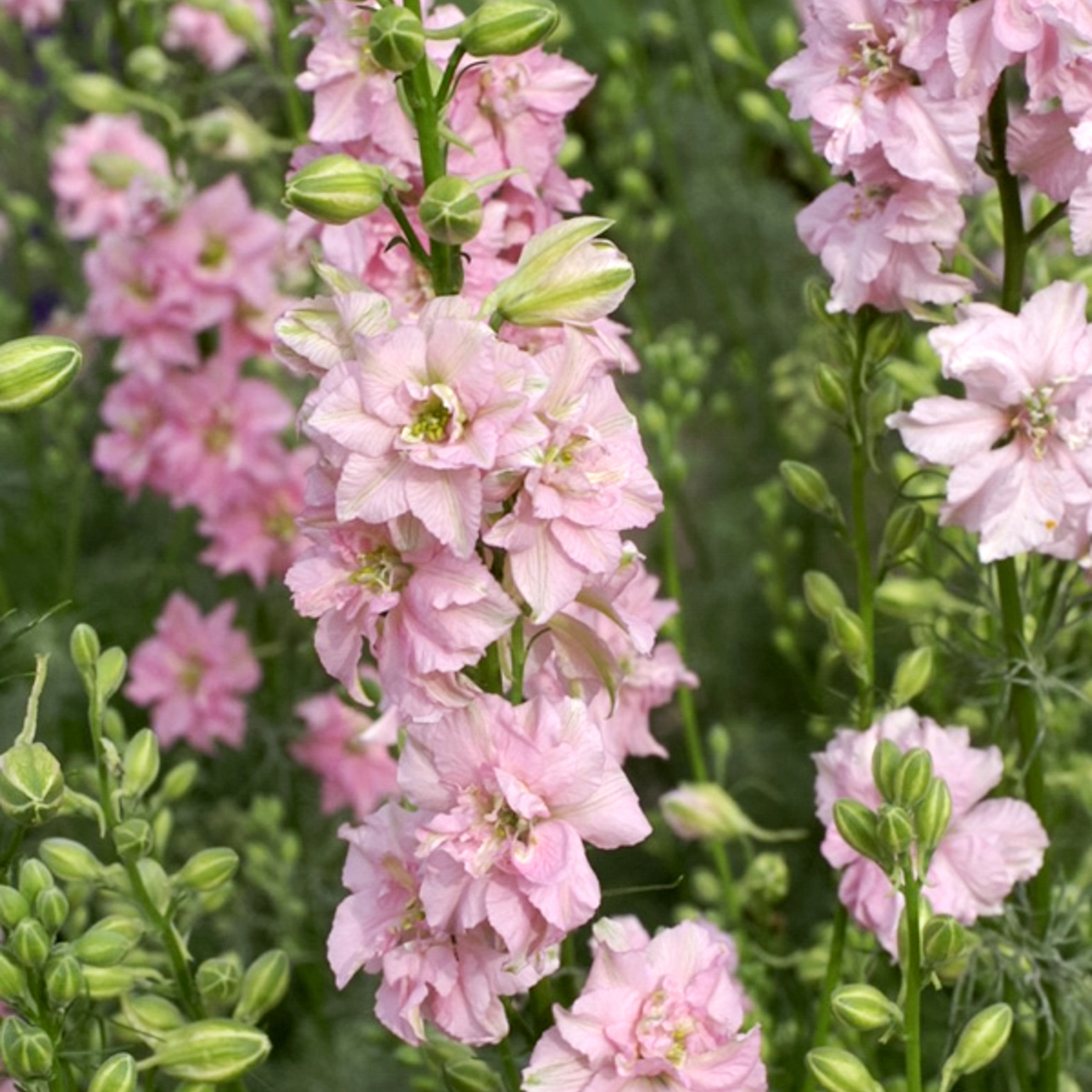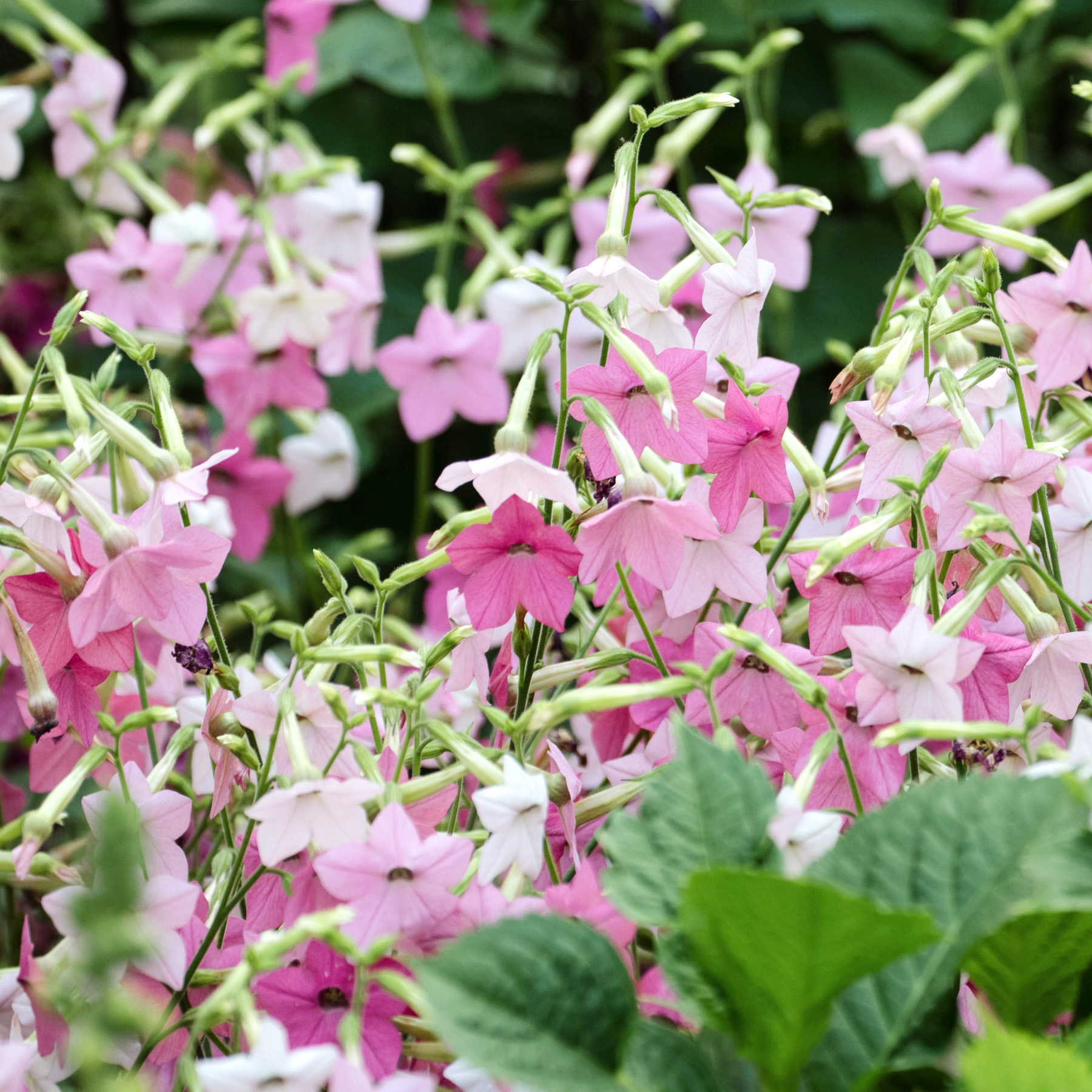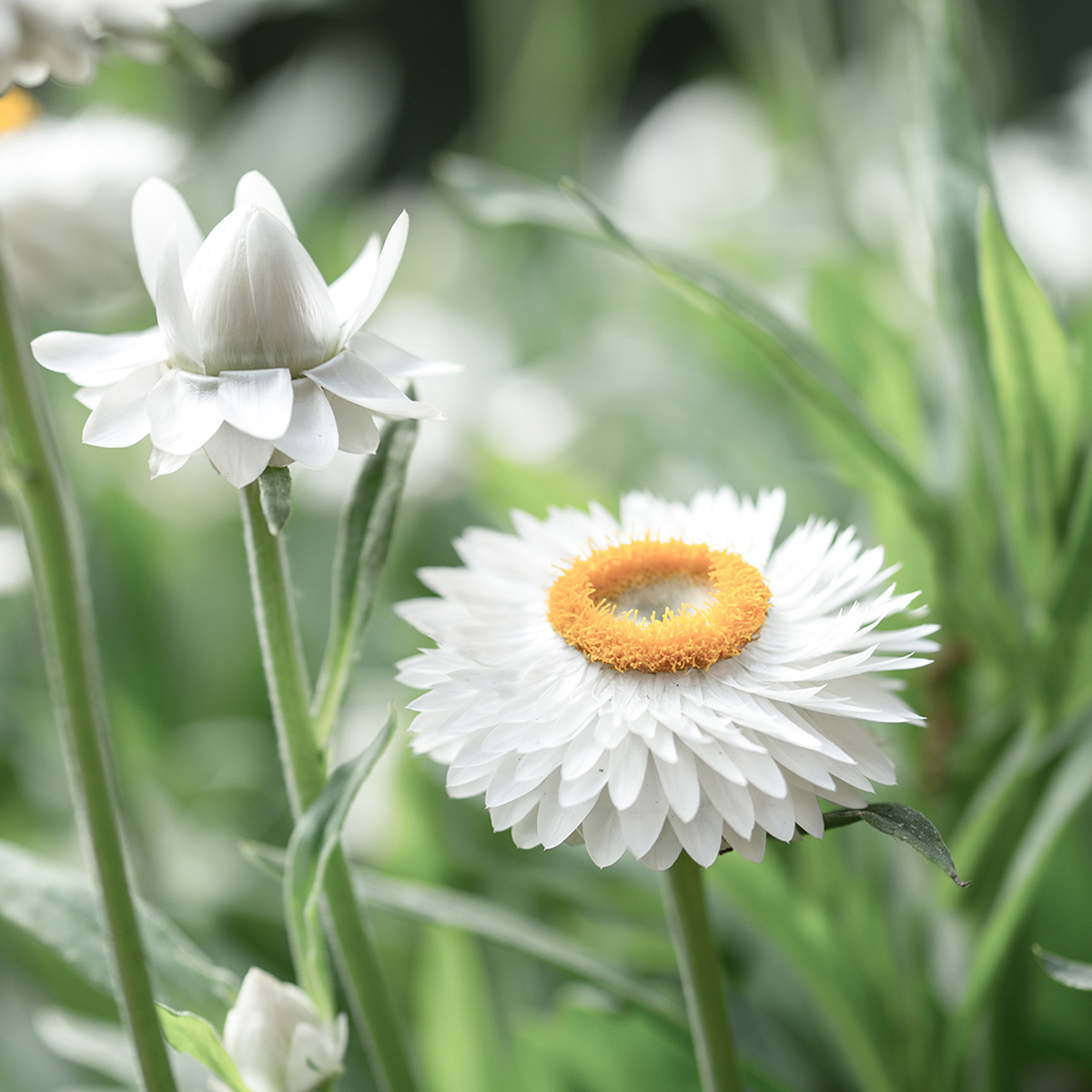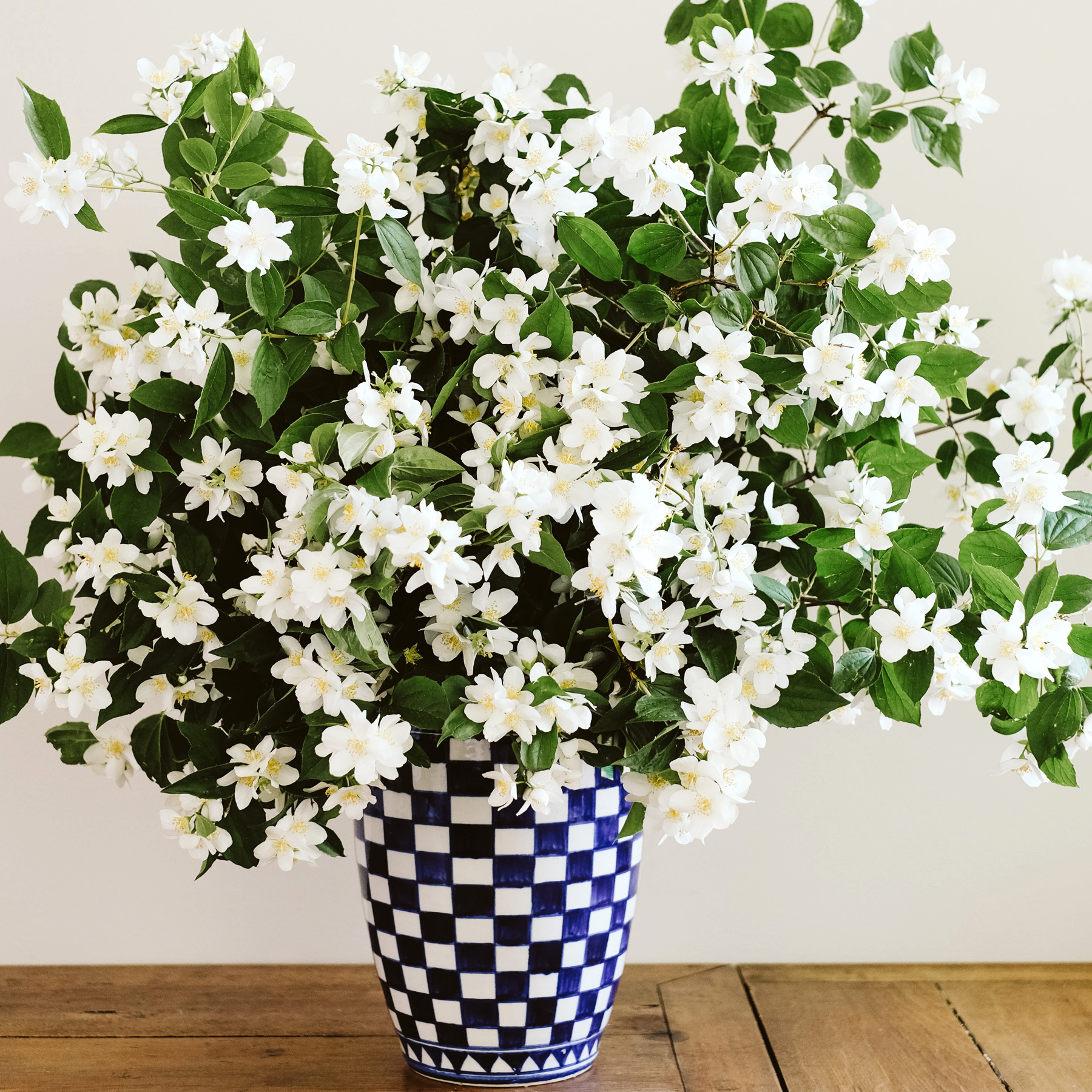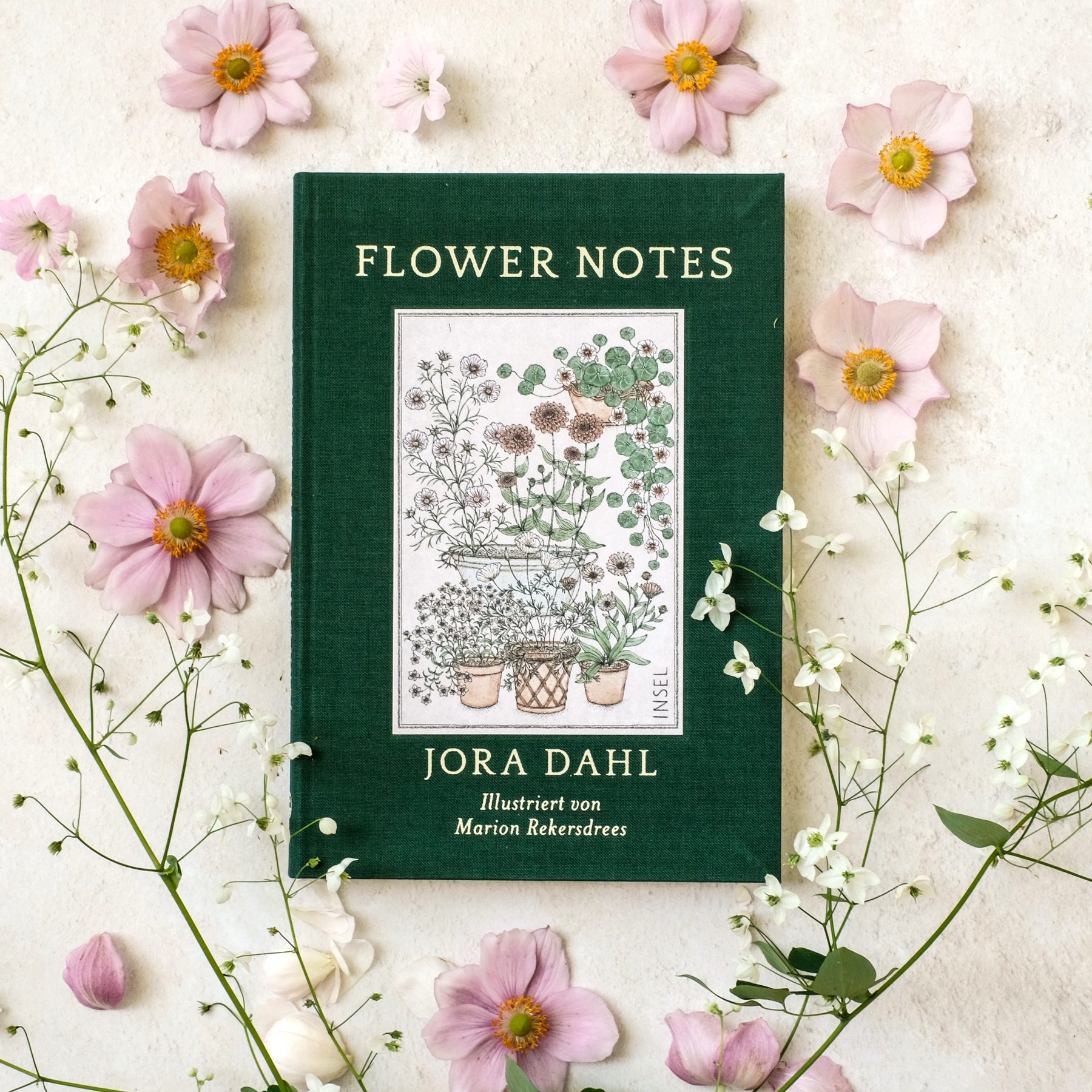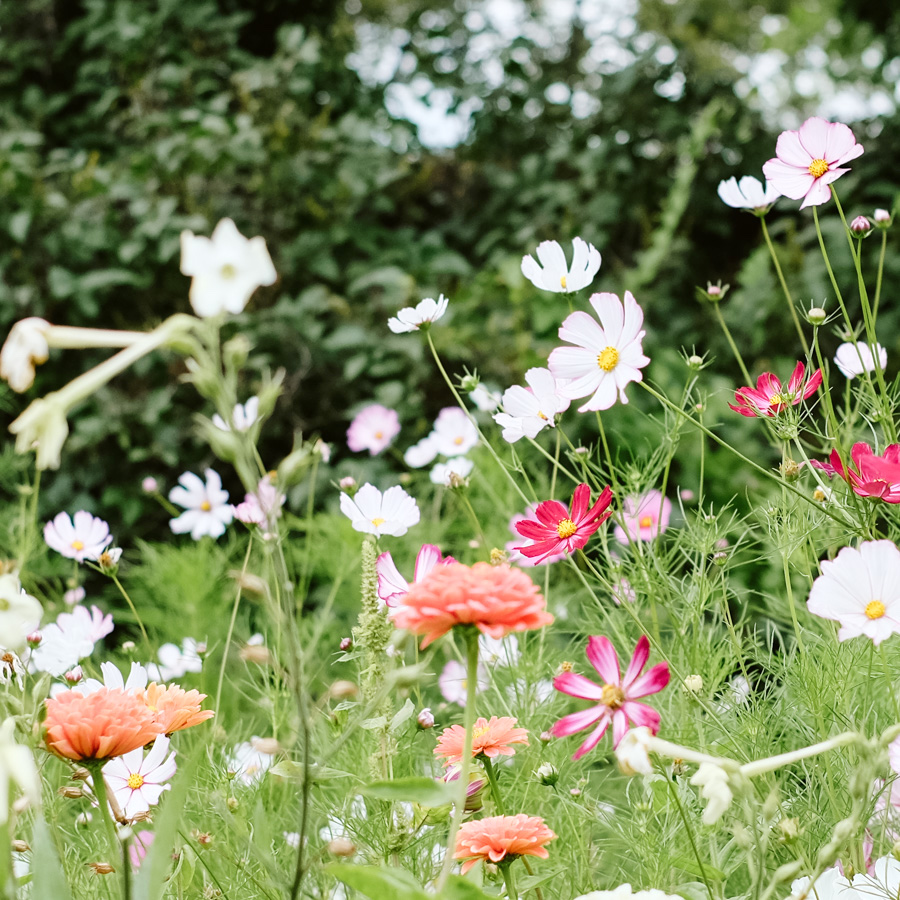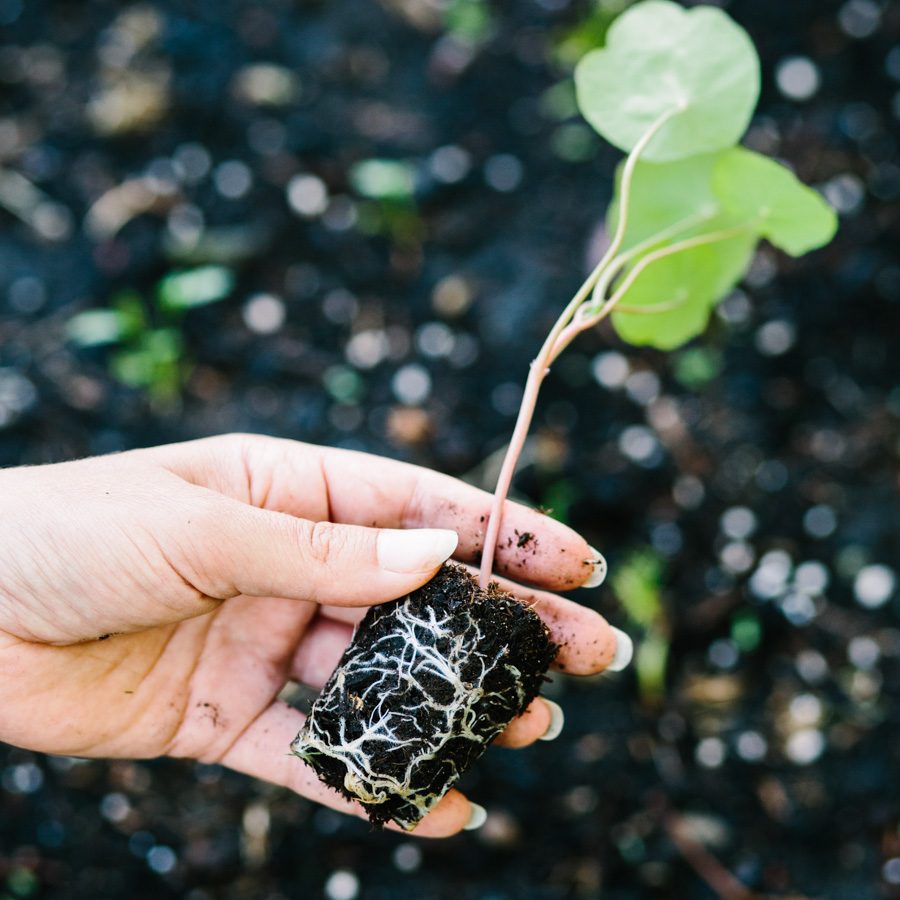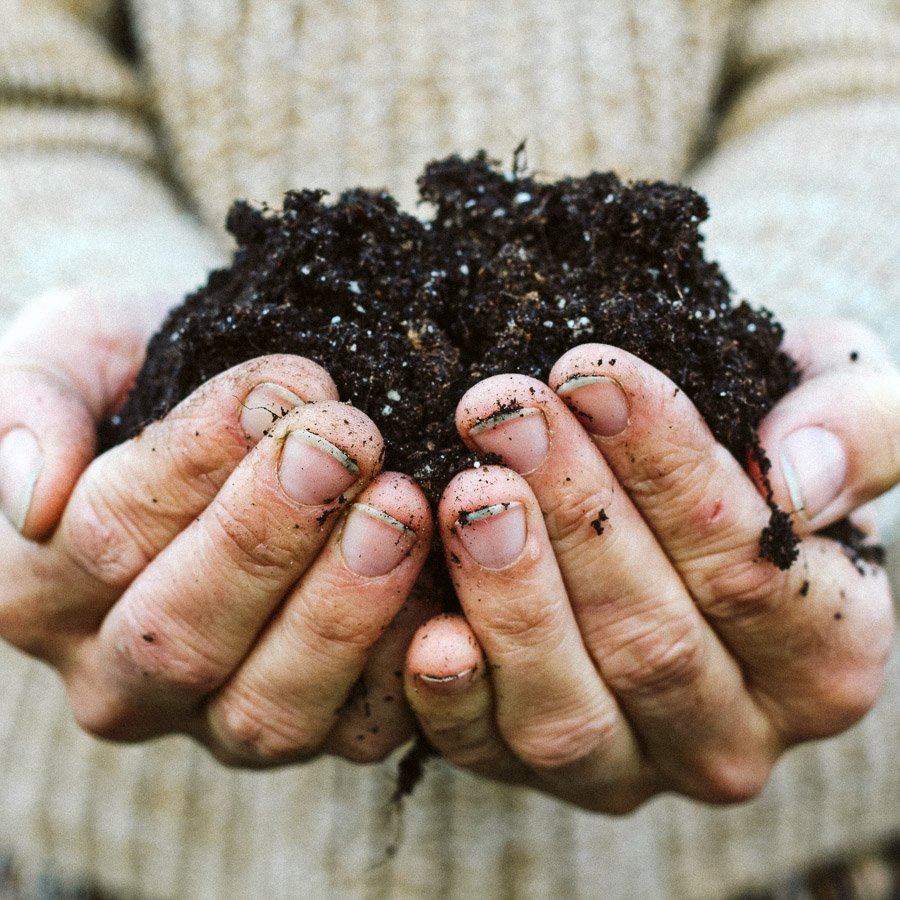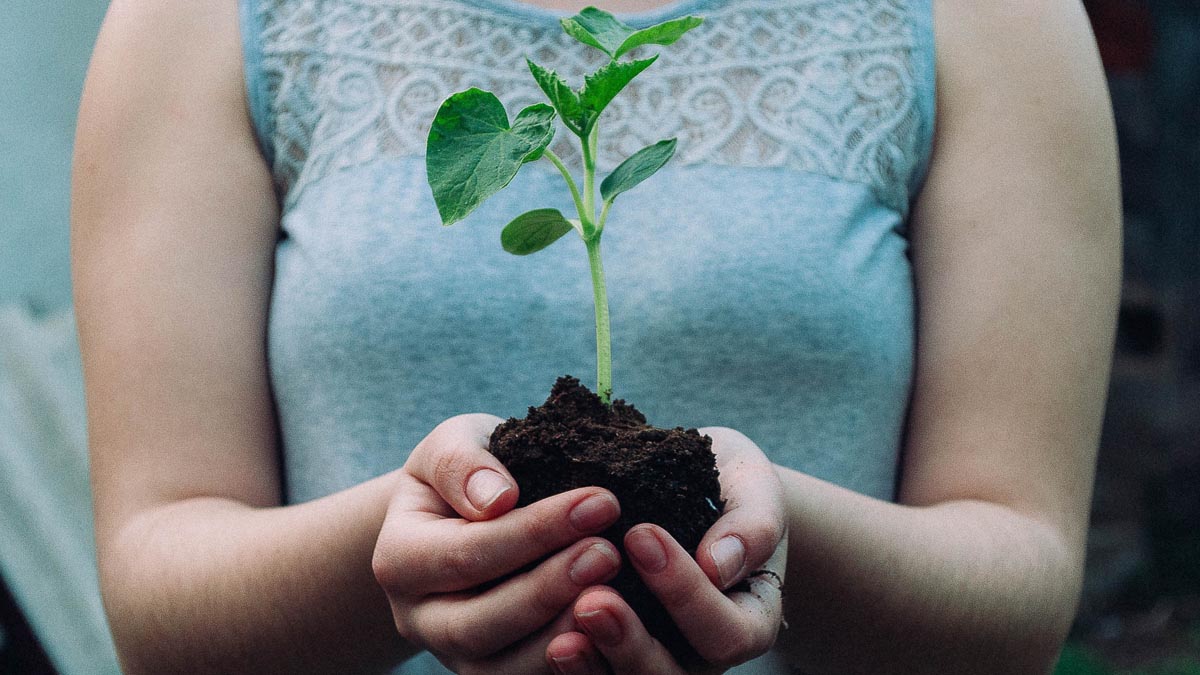
Small guide to sowing and harvesting cut flowers
All seeds have different requirements and peculiarities, so always follow the instructions on the variety label. The following is only a general advice, but it is mostly valid.
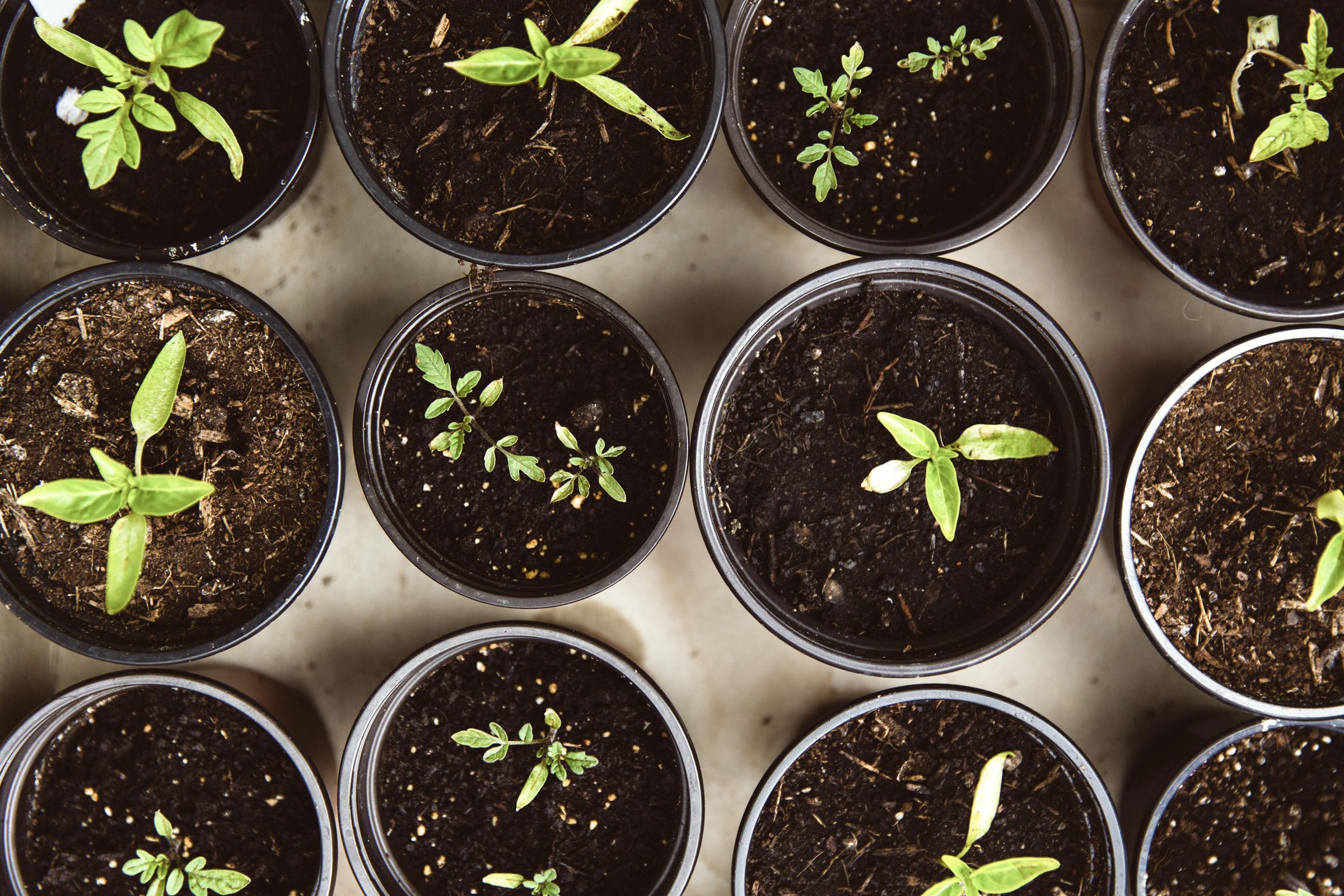
The material
For seed growing you will need:
–Potting pots with growing soil
-Alternatively, for many plantlets: multi-pot plate
–Pouring can with fine shower head

The location
Finding the right location for the plant pots is not easy. First and foremost, it should be very bright, as young plants need plenty of light to thrive. So it is best to choose a bright window sill. However, if the sun shines a lot, it is essential to make sure that the soil does not dry out. Once this has happened, the seeds can no longer be saved. I have made it a rule to water once a day. This only takes a good 3 minutes with 500 little plants standing in multi-pot plates on my office window sill.
The timing
As a general rule, growing indoors is preferable because the seedlings are protected here and will flower earlier than if direct-seeded later in the bed. Another disadvantage of direct seeding is: usually the weeds are faster than the plantlets. I usually start growing in mid-March-mid-April and repeat in May. To start already in February makes little sense, the light is still too bad and you often have to repot the seedlings.
Many annual plants are sensitive to frost. They really should not be planted outdoors until the danger of frost has passed. In most regions of Germany, this is the case from mid-May onwards. Frost tolerant varieties (Cool Flowers) can be sown as early as autumn or early spring. Here are instructions for these hardy annuals.

Sowing seeds
Unless otherwise specified, the recommended way is as follows: water soil in pot thoroughly so that it is moist but not wet. Use a pin to push in a small hole, place two seeds at a time in the pot and cover lightly with soil (does not apply to light sprouts, just let those trickle onto the soil).
Water lightly once a day (not too much!). Every 3-4 days, the position of the pots should be changed, as the seedlings will adjust to the sun and may otherwise grow crooked. When both seeds in the pot have germinated, remove one plant or place it in a new pot (prick out). There should really only be one plantlet growing per pot at a time. Four weeks after germination you can start fertilizing, this will ensure a greater abundance of flowers.
Once the pot is rooted and there is no longer any danger of frost, the young plants can be planted out. It may be useful to harden them off for a few days beforehand by placing them outside for hours at a time in a place that is not too sunny. If there is still a risk of frost, the plants can also be transplanted into a slightly larger pot so that the roots can continue to spread optimally. With a large number of young plants, however, this is a lot of work. Here it helps not to start too early with the cultivation.
Seeding and caring for young plants
When planting out, please follow the spacing given on the label of each variety. It is best to plant in good weed-free soil. You should also water and fertilize the plants regularly in the garden. However, care is not as demanding as with vegetables, as most varieties are extremely hardy. For tall plants with large flowers, please provide a support in good time. This can be a stick to which the main shoot is tied. With many plants, a net stretched approx. 30 cm above the ground is also suitable, into which the plants grow. Thin, long willow rods that are stuck into the ground and bent over look nicer though. So that they make a “net” into which the plants can grow.

Cutting Flowers
For many annual cut flowers, pinching is an important way to encourage greater branching and thus increased flower production. When the young plant is about 20-30 cm tall, simply remove the main shoot of the plant 15 cm above the ground with scissors or your fingers.
As soon as the first flowers form, they can be pruned for the vase. Many varieties are encouraged to produce more and more flowers by regular pruning. Other varieties such as Nigellas produce flowers only once, but can be reseeded in batches every 2-3 weeks (please do not pinch these). Faded planting parts should always be cut off.
Generally, you should cut flowers in the morning or evening if possible and place them directly in clean water to rest for a few hours in the shade.
